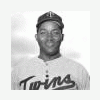Twins Games Don't Just SEEM Long...
Twins Video

...at an average of 3 hours and 16 minutes, they ARE long.
The average Twins game wraps up in a not-so-brisk brisk 3 hours and 16 minutes – the longest average game time in the MLB this year. A length of time in which you could individually microwave 245 corn dogs or complete the Boston Marathon AND watch two episodes of Cheers while you rehydrate. This is not to say the Twins are a pokey team. Due to extra innings, they’ve pitched more innings per game than any other team except the Cardinals. Their games have featured more combined plate appearances (79) than any other team except the White Sox. If you were to look at things at a more comparable level, say average time per plate appearance the Twins are only 5 seconds in excess of the MLB average.
Of course there are only 14 seconds of variation between the quickest team per plate appearance, Kansas City, and the slowest, the Los Angeles Dodgers – meaning that if every team played at the Royals pace, the average MLB game would still only be ten minutes shorter, 2:55 instead of 3:05.
Based on the above figures, pace-of-play rules alone don’t have enough ceiling room to make much of a difference. In order to do that, baseball has to address the two huge trends that are consistently lengthening the games each year. These are:
1. Number of pitches per at-bat. Currently at 3.90, this number was 3.75 in 2000 and 3.61 in 1990. Largely a product of the increasing strikeout rate which is currently 8.25, up from 6.45 in 2000 and 5.67 in 1990.
2. Number of pitching changes per game. Currently at 3.22 (per team), this number was 2.54 in 2000 and 2.02 in 1990.
While baseball purists pooh-pooh any notion that the game needs shortening, (“What global warming?”) I doubt those purists actually are enthusiastic about these trends continuing and baseball getting more and more slogged down. While any number of extreme remedies could be imposed - from limiting 3rd strike foul balls to adjusting the strike zone, there is another solution that addresses the trends without fundamentally changing any part of the game play, number of innings or on-field rules - and is actually quite simple to implement.
Limit the number of pitchers on the pitching staff. Eleven seems like a nice number. Ten would be better – but I’d settle for twelve for now and work downward over a couple of years.
With a shorter bullpen, managers will make fewer pitching substitutions. Of course that also means each pitcher has to throw more innings now, right? What about injuries?
Well, if pitchers continue to throw every pitch like it’s the last pitch in the World Series, yes, injuries would increase. If, however, they go back to pacing themselves accordingly (as pitchers used to do in the pre-internet 6 Ks per 9 inning days) they should actually reduce some of the wear and tear. A pitcher pacing himself also leads to the much desired outcomes of making strikeouts less prevalent and lessening the number of pitches thrown per at-bat.
Scoring should rise as result, too, and the bulk of persons comprising a team's paid attendance are not averse to scoring.
The pitchers teams would give up under this change are, literally, the worst pitchers in the league. The quality of the game should actually be improved by not having them around. (And yes, there will need to be some type of rule to keep teams from running an underground railroad of call-ups and demotions to continually restock the pitching staff with rested arms.)
Unless the MLB were to trim total roster size along with this, limiting the pitching staff would also mean another bat or two on the bench. (Gardy could carry that 3rd catcher!) Teams could cover more lefty-righty matchups and make greater use of defensive substitutions. There could be more opportunities for 30-something veterans to stay in the game instead of becoming "special advisers."
I’m interested in your feedback. Why is this a bad idea?






6 Comments
Recommended Comments